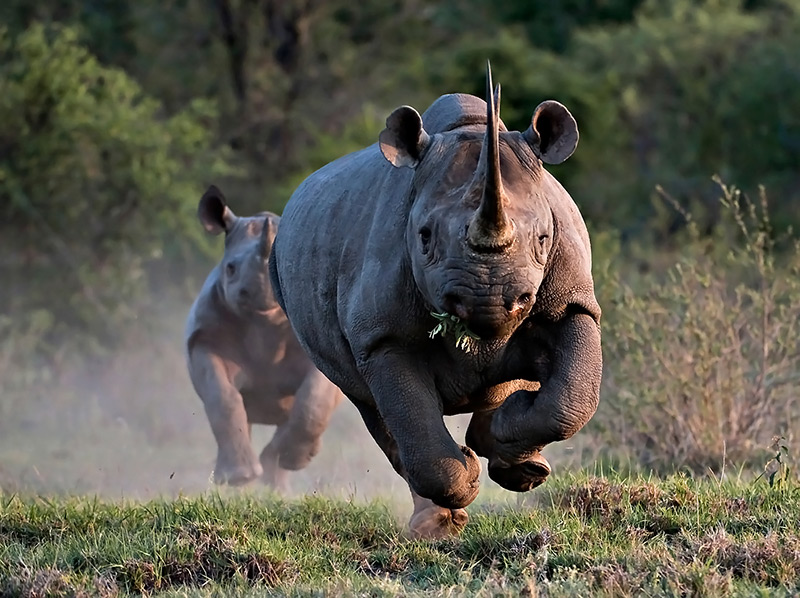

They contribute to species richness in their ecosystem.Ī LOSS OF THIS SPECIES, MAY LEADS TROPHIC CASCADES (Everatt et al. Rhinoceroses are ecosystem engineers, making a major impact on the ecosystem and helps the survival of other species. Habitat Destruction is another major threat facing Rhinos (2015), parasite such as Piroplasm which is transmitted by Thick have long been associated with wildlife animals and Rhino are not left out, however, as reported by (Otiende et al., 2015), stress induce disease, and animal translocation are a major cause of stress affecting Rhino (Otiende et al., 2015). Parasite and stress: In a study by Otiende et al. (2016)), hence, the huge price on Rhino makes it a target for poachers Poaching (Rhino horn cost $65,000 per gram as reported by Moodley et al. Namibia may allow five male rhinos to be killed every year ( Rh inos) 5,500 species of Black Rhinos are said to be available in the wild, with half of the population in Namibia. Rhinos are solitary animals and their calf lives with her mother till age three (3) ( National Geography). They are known to be more active during the night time ( SaveTheRhino) and display a characteristic urine scent marking to make know their territory ( SaveTheRhino). She has a gestation period between 460- 540 days and usually gives birth to a single Calf (Ritchie, 1962, Pilgrim and Biddle, 2008).īlack Rhinos are known to be a very aggressive animal, capable of charging easily when threatened ( Wikipedia). Plant fiber (Claus and Hatt, 2006), Legumes, and Acacia (Nowak, 1999) are their favorite diet (Pilgrim and Biddle, 2008). They are monogastric animals and they have a similar digestive system to horses. They are habituated wide range of habitats such as forest, bush, plain, and desert (Ritchie, 1962) and prefer an area that is within 25 km of water ((Pilgrim and Biddle, 2008). The rate of decline of this species in recent times is faster than any large terrestrial mammals. They are critically endangered (Nhleko et al., 2017)īlack Rhinos are reported to have poor eyesight and may not be able to sight properly object more than 30 m away, but they have a good sense of hearing and smelling (Adcock and Amin, 2006: Pilgrim and Biddle, 2008). They have a growing population in South Africa (Emslie and Adcock, 2016). 2016): they are known to occur from Southern Tanzania through Zambia, Zimbabwe, and Mozambique to South Africa. bicornis minor (South-central Africa Rhino Moodley et al. They are reported to be critically endangered with just about 631 individuals in Kenya (species stronghold) reported by Pilgrim and Biddle (2008)ĭ. They are reported to be the subspecies that was once extinct in Namibia in 1995 by poaching (Moodley et al., 2017). They have good population in Kenya and Tanzania. 2016): They are known to be distributed from South Sudan, Ethiopia, Somalia, Kenya, North central Tanzania and Rwanda. bicornis michaeli (East Africa Rhino Moodley et al. bicornis longipes (West African Rhino (Moodley et al., (2016)): declare Extinct in last know location in Cameroon in 2011, and once range the central- West Africa which includes Nigeria (Emslie and Adcock, 2016).ĭ. They currently have a growing number in Namibia and unconfirmed report in South Africa (Emslie and Adcock, 2016).ĭ. bicornis bicornis (South-West Africa Rhino (Moodley et al., (2016)): They are known to roam Namibia, Southern Angola, Western Botswana, and southeastern South Africa. There are four (4) recognized Black Rhinoceros Sub-species (Moodley et al., 2016: The IUCN Red List of Threatened Species, 2020), and they are:ĭ. The name Dicros was derived from the Greek word: “Di”: means two, “ceros” means horn (Pilgrim and Biddle, 2008) The Rhino is classified into two families: Black Rhino and White Rhino, native to Africa. Re-Introduced: Botswana, Malawi, Rwanda, and Zambia (Emslie and Adcock, 2016). They are extinct in the following countries: Benin, Burkina Faso, Cameroon, Central Africa Republic, Chad, Togo, Congo, Ethiopia, Niger, Nigeria, South Sudan, and Ugandan (Emslie and Adcock, 2016). (2019) in 2017, and by 2018 as reported by Knight (2019) there was 5, 630 estimated population (Emslie and Adcock, 2016).ĭistribution: Extant in Angola, Kenya, Mozambique, Namibia, South –Africa, Tanzania, and Zimbabwe.

Population: Estimated population of 5,495 individual Rhino reported by Emslie et al. IUCN Status: Critically Endangered listed by IUCN in 1996 and reassess in 2020 (Emslie and Adcock, 2016).

Scientific name: Diceros bicornis (Linnaeus, 1758)


 0 kommentar(er)
0 kommentar(er)
